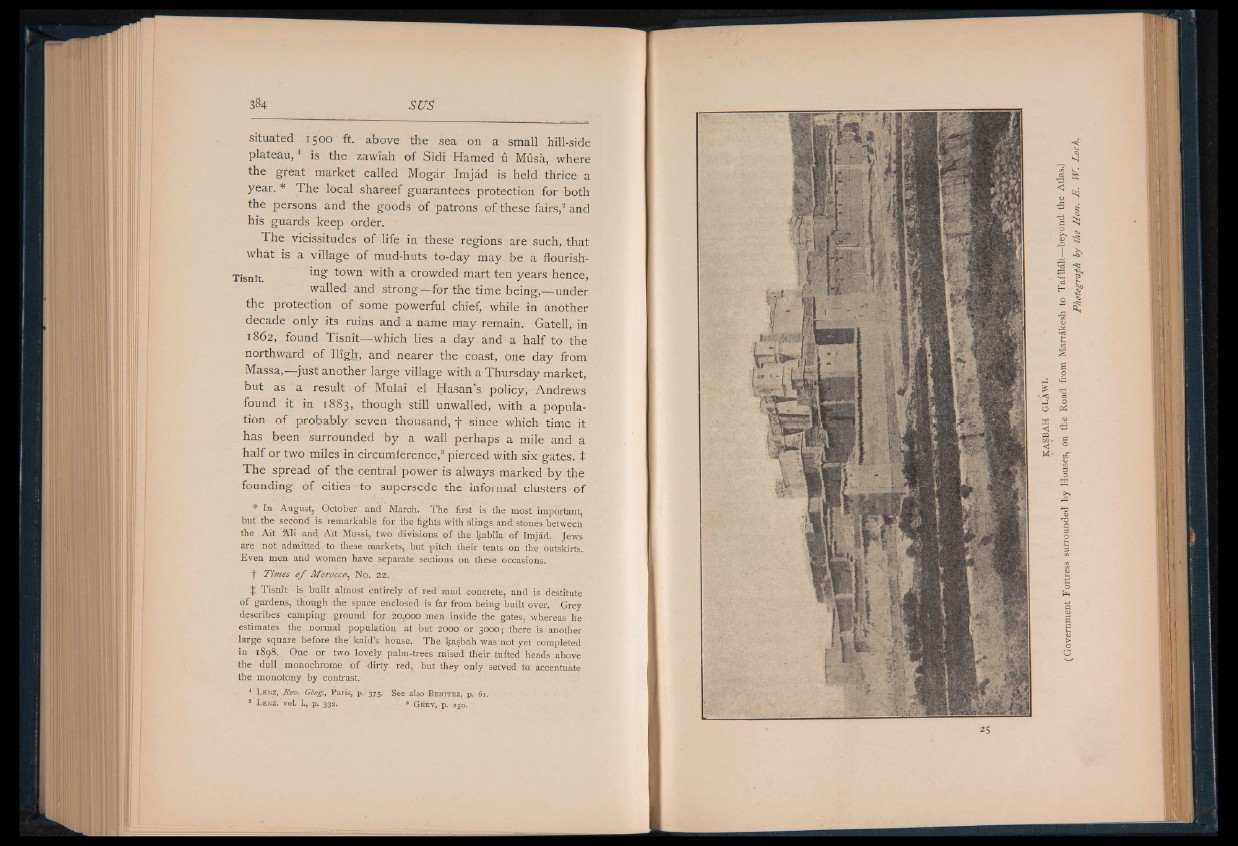
situated 1500 ft. above the sea on a small hill-side
plateau,1 is the zawiah of Sidi Hamed u Musa, where
the great market called Mogar Imjad is held thrice a
year. * The local shareef guarantees protection for both
the persons and the goods of patrons of these fairs,2 and
his guards keep order.
The vicissitudes of life in these regions are such, that
what is a village of mud-huts to-day may be a flourish-
Tisntt ln§ town with a crowded mart ten years hence,
walled and strong— for the time being,— under
the protection of some powerful chief, while in another
decade only its ruins and a name may remain. Gatell, in
1862, found Tisnit— which lies a day and a half to the
northward of High', and nearer the coast, one day from
Massa,— just another large village with a Thursday market,
but as a result of Mulai el Hasan's policy, Andrews
found it in 1883, though still unwalled, with a population
of probably seven thousand, f since which time it
has been surrounded by a wall perhaps a mile and a
half or two miles in circumference,3 pierced with six gates, t
The spread of the central power is always marked by the
founding of cities to supersede the informal clusters of
* In August, October and March. The first is the most important,
but the second' is remarkable for the fights with slings and stones between
the Ait Ali and Ait Mussi, two divisions of the kabila of Imjdd. Jews
are not admitted to these markets, but-pitch their tents on the outskirts.
Even men and women have separate sections on these occasions,
f Times o f Morocco, No. 22.
J Tisnit is built almost entirely of red mud concrete, and is destitute
of gardens, though the space enclosed is far from being built over. Grey
describes camping ground for . 20,000 men inside the gates, whereas he
estimates the normal population at but 2000 or 3000; there is another
large square before the kaid’s house. The kasbah was not yet completed
in 1898. One or two lovely palm-trees raised their tufted heads above
the dull monochrome of dirty red, but they only served to accentuate
the monotony by contrast.
1 L e n z , Rev. Gio'g., P a r i s , p . ' 375. S e e a lso B e n i t e z , p. 6 1.
2 L e n z . v o l. i., p . 332. 3 -G r e y , p . 250.